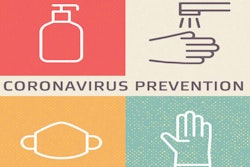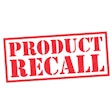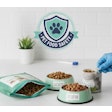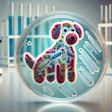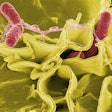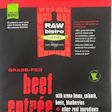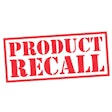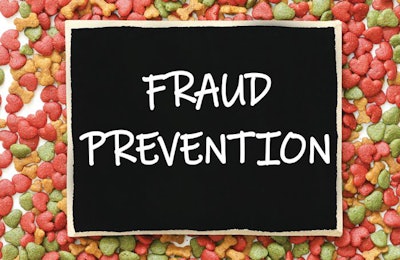
Previous crises, such as the 2008 global financial collapse, and an April 10, 2020, Forbes magazine headline, “Fraud: An inevitable symptom of COVID-19,” serve to teach us that fraud is a highly opportunistic crime, and we are vulnerable during the current COVID-19 pandemic.
Pet owners expect pet food raw materials and finished products to be both safe and authentic. Sadly, one type of fraud known as “food fraud” can affect both pet food safety and authenticity, making pets ill and causing loss of trust.
Drivers of fraud: “Cressey’s Fraud Triangle”
1950s research by U.S. criminologist Donald R. Cressey demonstrates that fraud requires three elements to be present for criminals to commit it:
- Opportunity: e.g., lack of food fraud control using Vulnerability Assessment and Critical Control Points (VACCP); raw material shortages, especially of “high-cost” ingredients
- Incentive/Motivation: e.g., personal thinking like “Everyone else is doing it” or “I am not making as much money as I deserve.”
- Justification: e.g., personal greed, debt, to fund addiction habits
It has been widely reported that during COVID-19, we face potential raw materials shortages driven by factors such as labor shortages, closure of trade routes and national shutdowns. These scenarios all increase the risk (opportunity) of food fraud.
The U.S. National Association of State Auditors, Comptrollers and Treasurers (NASACT) cite a “10-80-10 Rule” that indicates the capability and likelihood of fraud among the population: 10% of the population will never commit fraud, 80% might commit fraud given the right situation (opportunity, justification and motivation) and 10% are actively looking for the right situation to commit fraud.
To combat this, businesses must be aware of the risks and implement control systems to mitigate said risks.
Food fraud is a crime and criminals are highly opportunistic
Without a globally accepted definition of “food fraud,” typically this means “illegal deception for economic gain using food;” for example, intentional substitution, addition, tampering or misrepresentation of food, food ingredients or food packaging; or false or misleading statements made about a product (Spink, J. et al., 2019, Journal of Food Science, 84: 2705-2718).
In 2018, the EU Food Fraud Network estimated an annual global food fraud cost of around €30 billion (US$32 billion). Food fraud also causes loss of trust, often seen across the entire food supply chain; e.g., the 2007–2008 melamine crisis saw more pet owners making “homemade” pet food due to lack of trust in the industry.
Culminating in judicial fines and suspended jail sentences for two U.S. traders who sold melamine-adulterated wheat gluten, this crisis resulted in the biggest, most costly recall in the history of the pet food industry. The following facts highlight both the criminal and widespread food safety issues associated with this crisis:
- Wheat gluten widely used in moist pet food typically sold based on protein content, with “high” protein specification equaling higher sales price
- >800 tons of wheat gluten (used in moist pet food) adulterated with melamine to artificially increase protein content
- >100 brands and 60 million cans of pet food recalled, costing >US$42 million.
- >200 cats and 100 dogs suffered kidney failure, with estimated deaths (including euthanasia) of >1,900 cats and 2,200 dogs.
Not all food fraud is linked to food safety issues and must be considered on a case-by-case basis. For example, two potential pet food fraud scenarios might include:
- False labeling of fish; e.g., fish caught from fisheries not certified as “sustainable” might be labeled as “MSC sustainable” (higher market value) but might not cause food safety problems.
- Adulteration of turmeric, widely used in pet food, with lead chromate might cause long-term health issues.
It should be noted that food fraud also occurs with finished pet food. In 2015 and 2016, “fake” Orijen cat and dog food was packed into packaging designed to make the consumer think they were buying the genuine product.
Think like a criminal to protect your pet food business against food fraud
Raw materials are essential in ensuring pet food legality and safety and to meet customer expectations, but increased risk of food fraud might make it more difficult to meet these requirements. Factors increasing food fraud risk include potential staff shortages (including quality department staff), complex raw material supply chains and a shortage of “high-value” ingredients. These all contribute to the three elements required to commit fraud based on Cressey’s Fraud Triangle.
In addition to minimizing current risks, many market-leading businesses are currently reviewing systems like VACCP to build business preparedness and resilience for future crises. Although a detailed discussion is not possible here, VACCP involves a logical, systematic approach similar to Hazard Analysis Critical Control Points (HACCP) used for food safety management. For effectiveness, a VACCP study requires that we “Think like a criminal”:
- Which raw materials are more vulnerable?
- Which types of adulteration are more difficult to detect?
- Where are the weak spots in the supply chain (vulnerable points) where adulteration/substitution can be made?
- Where and what are the control systems that need to be improved?
For effectiveness, VACCP must also include “horizon scanning” to identify future potential food fraud risks and mitigate these using appropriate controls. For example, increased trends for using “superfoods” in human foods might increase risk if these are used as part of humanization in pet food.
Many businesses see technical risk management as a cost of doing business. However, consider the scenario of food fraud destroying the trust, sales and profitability of your business. Is it a risk worth taking?




